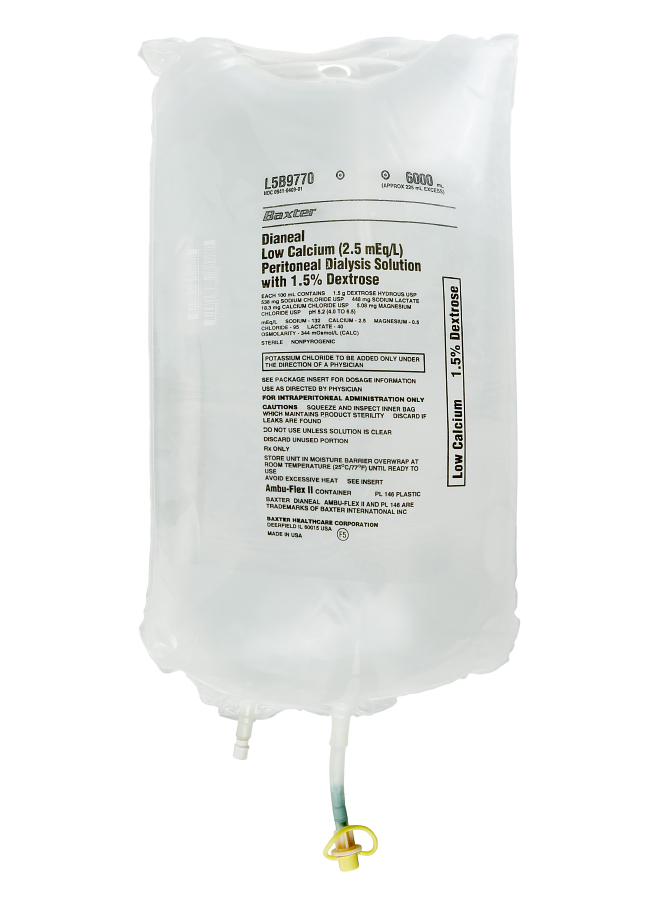Dianeal PD Solution
Baxter is a market leader in the Peritoneal Dialysis (PD) landscape with extensive experience.1
Indications and Usage
DIANEAL peritoneal dialysis solutions are indicated for patients in acute or chronic renal failure. Please read the accompanying Important Risk Information and full Prescribing Information.

Baxter has a 40-year heritage developing PD solutions1 and Dianeal is the most widely used Baxter PD solution, currently sold in over 75 countries worldwide.2

The Dianeal solution portfolio offers the broadest range of dextrose concentrations and solution volumes to meet the unique needs of your acute or chronic renal failure patients, while also minimizing waste.3,4
DIANEAL Peritoneal Dialysis Solution Important Risk Information (IRI)
DIANEAL Solution is contraindicated in patients with severe lactic acidosis.
Peritonitis has been associated with DIANEAL Solution use. Following use, inspect the drained fluid for the presence of fibrin or cloudiness, which may indicate the presence of peritonitis. Improper clamping or priming sequence may result in infusion of air into the peritoneal cavity, which may result in abdominal pain and/or peritonitis. If peritonitis occurs, treat with appropriate therapy.
Encapsulating Peritoneal Sclerosis (EPS), sometimes fatal, is a complication of peritoneal dialysis therapy and has been reported in patients using DIANEAL Solution.
Monitor patients with conditions known to increase the risk of lactic acidosis [e.g.,severe hypotension or sepsis that can be associated with acute renal failure, hepatic failure, inborn errors of metabolism, and treatment with drugs such as nucleoside/nucleotide reverse transcriptase inhibitors(NRTIs)] before the start of treatment and during treatment with lactate‐based peritoneal dialysis solutions.
Over-infusion of peritoneal dialysis solution volume into the peritoneal cavity may be characterized by abdominal distention, feeling of fullness and/or shortness of breath. Drain the peritoneal dialysis solution from the peritoneal cavity to treat over infusion.
Peritoneal dialysis may affect a patient’s protein, water‐soluble vitamin, potassium, bicarbonate, calcium, and magnesium levels and volume status. Monitor hematology, electrolytes, blood chemistry and fluid status periodically and take appropriate clinical action.
Potassium is omitted from DIANEAL solutions because dialysis may be performed to correct hyperkalemia. In situations where there is a normal serum potassium level or hypokalemia, addition of potassium chloride (up to a concentration of 4 mEq/L) to the solution may be necessary to prevent severe hypokalemia.
Monitor fluid status to avoid hyper‐or hypovolemia and potentially severe consequences including congestive heart failure, volume depletion and hypovolemic shock.
DIANEAL Solution contains dextrose and may increase the risk for hyperglycemia in patients with impaired glucose tolerance. Patients may require initiation or modification of antidiabetic therapy during treatment with DIANEAL Solution. Monitor blood glucose.
There is a potential for overdose resulting in hypervolemia, hypovolemia, electrolyte disturbances or hyperglycemia. Excessive use of DIANEAL Solution with 4.25% dextrose during a peritoneal dialysis treatment can result in significant removal of water from the patient.